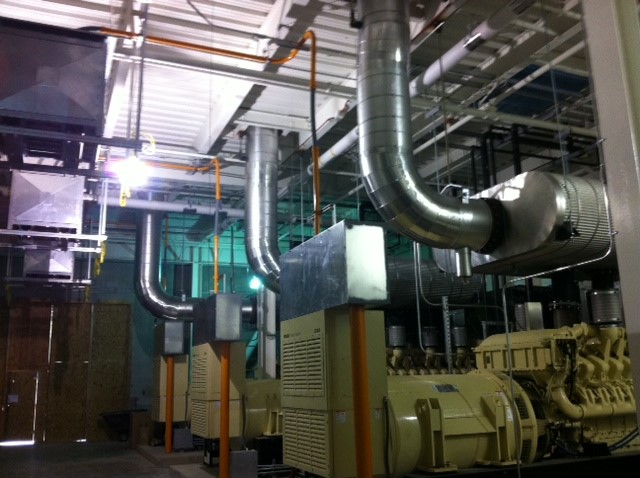Modernizing facilities and managing campus growth for large hospitals and networks is almost never a simple matter of expanding a “footprint” to accommodate a growing (and changing) array of services to the community. For one thing, there are more and different technologies emerging to master and include (from digital imaging over IP networks to the impact of wireless devices on the practice of medicine, for example). So it follows that addition simply isn’t everything. For every entirely new application there are old ones being transformed utterly.
technologies emerging to master and include (from digital imaging over IP networks to the impact of wireless devices on the practice of medicine, for example). So it follows that addition simply isn’t everything. For every entirely new application there are old ones being transformed utterly.
Consider, for example, the growth of LED lighting and its impact on energy consumption in hospitals. Hundreds of times more efficient, LEDs lower net consumption of electricity substantially: first, by consuming far less energy to supply substantially brighter, more controllable light; second, by putting out a fraction of the heat produced by lighting fixtures of the past, resulting in lowered consumption of power for air conditioning and environmental control. Add the impact on maintenance of the vastly longer life of LED lamps themselves with automated controls and occupation and daylight sensors and the savings from the LED revolution become a nearly universal benefit.
In managing buildings and supplying power, additional revolutions in technology have transformed electrical and communications infrastructure, where energy still consumes slightly more than half the budget of hospital operations and maintenance. Changes in  the nature of demand have made designing and installing energy infrastructure more complex and more challenging. These changes have also impacted building codes. With a majority of hospital buildings in the US being 20 years old or more, the challenges of maintaining aging infrastructure has had to be kept in balance with the overlay of new systems that function in many cases on top of older, more or less integrated distribution and telecom networks. All of this adds to the costs of maintenance, to say nothing of creating a multitude of design and implementation challenges for new construction on campuses with large numbers of existing and aging buildings.
the nature of demand have made designing and installing energy infrastructure more complex and more challenging. These changes have also impacted building codes. With a majority of hospital buildings in the US being 20 years old or more, the challenges of maintaining aging infrastructure has had to be kept in balance with the overlay of new systems that function in many cases on top of older, more or less integrated distribution and telecom networks. All of this adds to the costs of maintenance, to say nothing of creating a multitude of design and implementation challenges for new construction on campuses with large numbers of existing and aging buildings.
In many cases, sheer complexity and density (as well as the drag on performance and budgets) of existing systems attempting to incorporate newer technologies has forced hospital management to expand and modernize wholesale by performing what amounts to radical surgery in demolishing and replacing whole sets of buildings with new construction. In such cases, the management team has the opportunity to bring integrated project teams to deliver optimally designed building systems supplied end-to-end with new generation of integrated equipment operating on an “intelligent,” IP network. Even in this ideal environment, it often makes sense to postpone “transplantation” of a new, vastly more efficient central utility plant and distribution system. Where long-term planning and systematic development can be conducted in due sequence, this approach offers lots to recommend it. Not least, because by the time the new facilities are built and commissioned and fully operational, actual demand for power and connectivity is thoroughly understood and can be met by a designed replacement strategy that accommodates these new levels of demand at the same time as they can stage in advance judicious, future expansions.
A great example of this deliberative approach to modernization has been at the Veterans Medical Center at the historic Jefferson Barracks in St. Louis, Missouri. Here, planners have  worked continuously for over a decade in pursuing step-by-step renovation of the Center’s clinical and long term care facilities. This reached a key point in the mid-teens when it was time to replace the Central Utility Plant. Here, the importance of preconstruction planning and design in construction of replacement infrastructure cannot be over-emphasized. The Jefferson Barrack’s site itself is over two hundred years old, which presented a host of challenges to the construction team led by McCarthy Building Companies and supported by Guarantee Electrical Company, who supplied the electrical design and preconstruction for the JBVA Med Center’s Central Utility Plant, completed in 2015.
worked continuously for over a decade in pursuing step-by-step renovation of the Center’s clinical and long term care facilities. This reached a key point in the mid-teens when it was time to replace the Central Utility Plant. Here, the importance of preconstruction planning and design in construction of replacement infrastructure cannot be over-emphasized. The Jefferson Barrack’s site itself is over two hundred years old, which presented a host of challenges to the construction team led by McCarthy Building Companies and supported by Guarantee Electrical Company, who supplied the electrical design and preconstruction for the JBVA Med Center’s Central Utility Plant, completed in 2015.
Elsewhere, institutions have been markedly less fortunate in pursuing managed growth. The case of Mercy System’s regional hospital in Joplin is perhaps the most notable  example of what so-called acts of God can bring. In May, 2011 an EF 5 multiple vortex tornado struck Joplin Missouri, destroying St. John’s Mercy Hospital along with over 8,000 additional structures in that city. Constructing Mercy’s replacement hospital, became a vital cause and an ultimate triumph for the entire Joplin community, as Mercy Health and its partners had healthcare system optimization forced upon them by Mother Nature. With a separate stand-alone, heavily reinforced Central Utility Plant and new and redundant infrastructure placed underground or in-slab and constructed to withstand the strongest storms on record, including the one that destroyed its predecessor, Mercy Joplin is today among the most advanced healthcare facilities in North America.
example of what so-called acts of God can bring. In May, 2011 an EF 5 multiple vortex tornado struck Joplin Missouri, destroying St. John’s Mercy Hospital along with over 8,000 additional structures in that city. Constructing Mercy’s replacement hospital, became a vital cause and an ultimate triumph for the entire Joplin community, as Mercy Health and its partners had healthcare system optimization forced upon them by Mother Nature. With a separate stand-alone, heavily reinforced Central Utility Plant and new and redundant infrastructure placed underground or in-slab and constructed to withstand the strongest storms on record, including the one that destroyed its predecessor, Mercy Joplin is today among the most advanced healthcare facilities in North America.